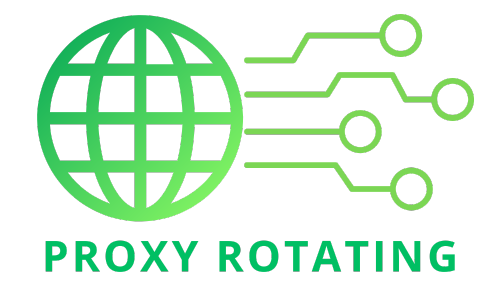Data is a precious resource in the digital age. Exploiting and using data effectively can help drive economic and social development and improve the quality of human life. In the process, it is necessary to ensure that data is private and secured to the maximum to avoid unnecessary risks. We have two terms regarding data protection: Data Privacy vs Data Security. Are these two terms similar or different? Let’s explore this in the following article.
Why is it important to understand the differences between Data Privacy and Data Security?
Understanding the differences between data privacy and data security is crucial for several reasons, as they are both fundamental aspects of information management but focus on different objectives and require distinct approaches:
- Different objectives: Data privacy concerns the rights of individuals regarding their personal information and how it is collected, used, shared, and stored. It focuses on compliance with laws and regulations that protect individuals’ privacy rights. Data security, on the other hand, is about protecting data from unauthorized access and breaches, regardless of the data’s nature. It involves the technical and administrative measures implemented to prevent data loss, theft, or corruption.
- Regulatory compliance: Many countries and regions have enacted data privacy laws, such as the GDPR in the European Union, the CCPA in California, and the PIPL in China. These laws mandate specific requirements for handling personal data, including obtaining consent for data processing and ensuring data subjects’ rights. Understanding these requirements is essential for legal compliance. While often part of these regulations, data security measures focus more on the technical safeguards and processes to protect data.
- Trust and reputation: Properly managing data privacy enhances trust between businesses and their customers or users. It demonstrates respect for individuals’ rights and personal information, contributing positively to a company’s reputation. Robust data security is a critical component of this trust, as security breaches can significantly damage a company’s reputation and erode customer trust.
- Risk management: Differentiating between data privacy and security helps organizations identify and manage risks more effectively. Privacy-related risks may arise from non-compliance with laws or failure to uphold data subjects’ rights, leading to legal penalties and reputational damage. Security risks involve potential data breaches and loss, which can have financial, operational, and legal consequences.
- Strategic planning and resource allocation: By understanding the distinct aspects of data privacy and security, organizations can allocate resources more effectively and implement appropriate policies, procedures, and technologies. This strategic approach ensures that privacy and security considerations are adequately addressed, optimizing protection efforts and compliance.
- Consumer expectations: As public awareness of data privacy issues grows, consumers increasingly expect companies to protect their personal information from breaches and use it responsibly and transparently. Meeting these expectations requires a comprehensive approach encompassing privacy and security measures.
Recognizing the differences between data privacy and data security allows organizations to implement comprehensive strategies that protect sensitive information, comply with legal obligations, maintain customer trust, manage risks effectively, and allocate resources efficiently.
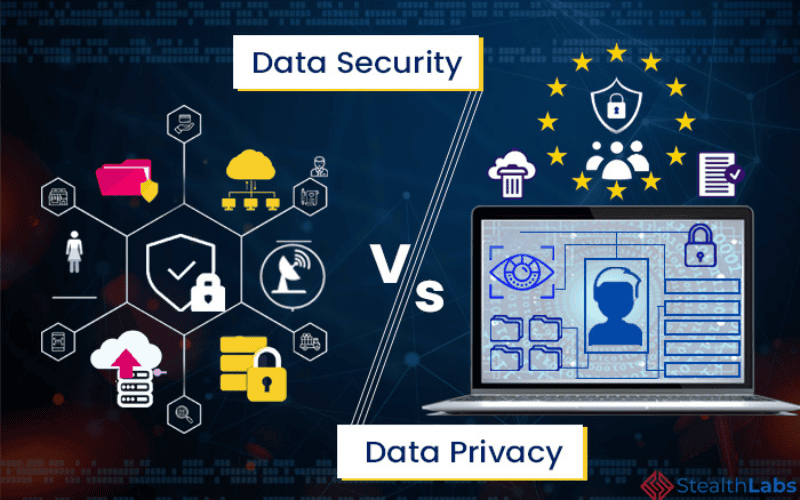
What is Data Privacy?
Data privacy refers to properly handling, processing, storing, and using personal information concerning individual choice and privacy rights. It protects personal data — such as names, addresses, and social security numbers — from unauthorized access, breaches, and theft. The core principle behind data privacy is to ensure that individuals have control over their personal information and how it is used or shared.
Data Privacy and U.S. Law
Data privacy is regulated through a patchwork of federal and state laws in the United States. At the federal level, there isn’t a single, comprehensive data privacy law. Instead, various laws cover specific sectors. For instance:
- The Health Insurance Portability and Accountability Act (HIPAA) protects personal health information.
- The Children’s Online Privacy Protection Act (COPPA) addresses the online privacy of children under 13.
- The Fair Credit Reporting Act (FCRA) governs the collection and use of consumer information, including credit and background checks.
Several U.S. states have also enacted their own data privacy laws. California, for example, has the California Consumer Privacy Act (CCPA), which gives residents more control over the personal information that businesses collect about them.
Data Privacy and the GDPR
The General Data Protection Regulation (GDPR) is a regulation in EU law on data protection and privacy in the European Union and the European Economic Area. It also addresses the transfer of personal data outside the EU and EEA areas. The GDPR is known for its stringent rules and significant penalties. Key aspects include:
- Consent: Individuals must explicitly consent to the processing of their data. This consent can be withdrawn at any time.
- Right to Access: Individuals can access their data and information about how it is processed.
- Right to Erasure: Often referred to as the “right to be forgotten,” this right allows individuals to have their data deleted under certain circumstances.
- Data Portability allows individuals to obtain and reuse their data across different services.
- Data Protection Impact Assessments (DPIA): Organizations must conduct DPIAs where data processing is likely to result in high risk to the rights and freedoms of individuals.
The GDPR has set a benchmark globally and has influenced many countries to reform their data protection laws to ensure better privacy protections.

What is Data Security?
Data security refers to the protective measures and protocols to safeguard data from unauthorized access, use, disclosure, disruption, modification, or destruction. Data security aims to ensure privacy while protecting personal or organizational data against breaches and cyber attacks. Here are some key components and strategies involved in data security:
- Encryption: Encrypting data transforms it into a secure format that can only be read or processed after decryption, which requires a decryption key. This is critical for protecting sensitive information, mainly when transmitted over the internet or stored in the cloud.
- Access Control: Implementing robust access control measures ensures only authorized users can access or manipulate data. This can include using passwords, biometric data, and access cards.
- Authentication and Authorization: These processes verify the identity of users trying to access data and ensure they have the appropriate permissions to perform actions on the data.
- Firewalls and Antivirus Software: Firewalls act as barriers between trusted and untrusted networks, controlling incoming and outgoing network traffic based on security rules. Antivirus software helps protect against malware that can compromise data.
- Data Masking: This process obscures specific data within a database to maintain data security without limiting the functionality of the application using the data.
- Backup and Recovery: Regularly backing up data ensures that it can be recovered in the event of data loss or corruption. This is essential for maintaining data integrity and continuity of operations.
- Physical Security: Protecting the physical locations where data is stored is crucial. This can involve secure facilities, surveillance systems, and environmental protections against fire, flood, and other hazards.
- Network Security: Measures to protect data in transit include using secure network protocols such as HTTPS and securing network connections with VPNs and other technologies.
Effective data security involves a combination of technical measures, organizational policies, and user education to address various threats and vulnerabilities. Ensuring data security is a critical component of risk management for any organization, particularly in an era where data breaches can have severe reputational and financial consequences.
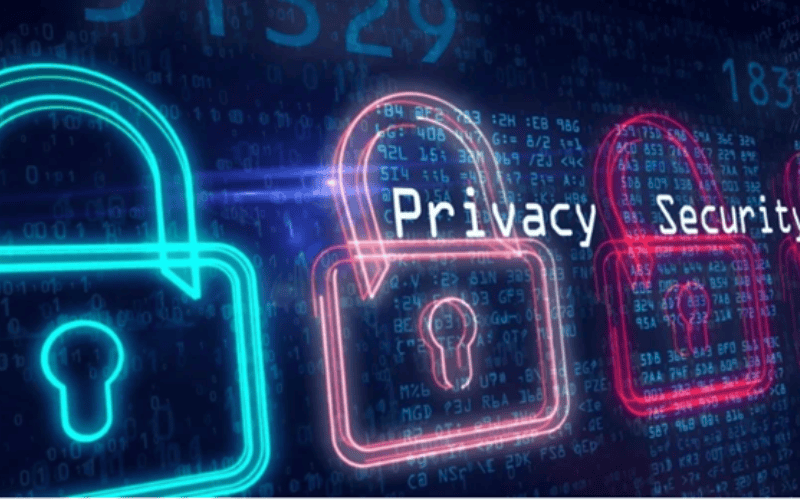
Comparing Data Privacy vs Data Security
Data privacy and data security are closely related concepts that often overlap, but they address different aspects of information protection. Understanding their similarities and differences is crucial for implementing comprehensive information management policies.
Similarities between Data privacy vs Data protection
- Protection of Information: Data privacy and data security aim to protect information from unauthorized access and misuse. They work together to ensure that data is handled responsibly.
- Compliance and Regulation: Both areas are heavily regulated under various laws and regulations, and organizations must comply with these to avoid legal and financial penalties.
- Risk Management: Privacy and security both involve assessing and mitigating risks to information. They require ongoing evaluation of practices and systems to adapt to new threats.
- Technological Tools: Both utilize technological solutions like encryption, access controls, and secure software architectures to achieve their goals.
Differences between Data Privacy and Data Security (Data privacy vs Information Security)
- Focus and Scope:
-
- Data Privacy focuses on individuals’ rights to control their personal information and how it is collected, used, and shared. It also complies with privacy laws and regulations, ensuring that personal information is used according to individual preferences and legal standards.
- Information Security protects data from unauthorized access and breaches regardless of its content. It focuses on the technical and administrative safeguards that prevent data from being accessed, altered, or destroyed without authorization.
- Legal and Ethical Considerations:
-
- Data Privacy is often driven by ethical considerations regarding personal autonomy and the right to privacy. Legal compliance depends on regional and sector-specific laws, such as the GDPR in Europe or HIPAA in the U.S. healthcare sector.
- Data Security is also regulated, but the focus is more on following best practices and standards for securing data systems and networks. Laws may dictate specific security measures, but they are generally more technical.
- Implementation:
- Data Privacy: Involves policies regarding data minimization, purpose limitation, data retention, and ensuring user rights such as access and the right to be forgotten.
- Data Security: Involves implementing technical controls like firewalls, intrusion detection systems, and security protocols, as well as conducting regular security audits and breach response planning.
Despite these differences, in practice, data privacy and data security often need to be addressed together. Adequate data privacy can only exist with solid data security measures, as securing data is a prerequisite to ensuring privacy. Conversely, robust data security practices should be guided by privacy principles to ensure they protect data in a way that respects user privacy.
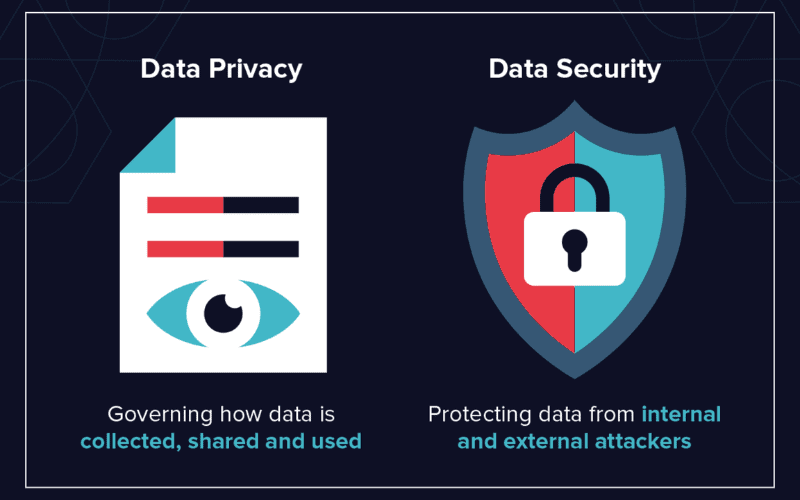
Solutions to Enhance Data Privacy
Privacy policy:
- Develop and implement a clear, transparent, and understandable privacy policy.
- Provide detailed information about collecting, using, and sharing personal data.
User consent:
- Obtain explicit and voluntary consent from individuals before collecting personal information.
- Provide choices and control to users over the sharing of their information.
Protecting sensitive data:
- Identify and implement special protective measures for sensitive data such as bank account information, medical information, and other critical personal data types.
Education and awareness:
- Organize regular training programs to educate employees and users about privacy rights and how to protect personal information.
Transparency and reporting:
- Provide regular reports on how personal data is used and secured.
- Create opportunities for users to review and verify their personal information.

Solutions to Enhance Data Security
Data encryption:
- Apply encryption to protect data while it is being transferred to and from systems and when it is stored.
- Use full data encryption for sensitive data.
Access control:
- Identify and control data access rights through the use of rights management systems.
- Apply the principle of least privilege, meaning granting the minimal level of access necessary.
System monitoring:
- Deploy monitoring systems to track network and system activities.
- Use intrusion detection solutions to identify unusual actions.
Protection from malware:
- Use antivirus and anti-malware software to protect against threats from malicious software.
- Update and manage programs and operating systems to ensure safety.
Backup and recovery:
- Implement regular backup procedures to ensure that data can be recovered after an incident.
- Test and review the recovery plan regularly.
Legal compliance:
- Monitor and comply with data security regulations and laws.
- Take necessary steps to ensure the organization adheres to industry standards and regulations. By combining these two aspects, organizations can comprehensively protect their information and data.

The impact of Data Privacy vs Information Security on society
Data privacy and security have significant implications for society in various aspects. Below are some essential impacts of them:
Protecting individual privacy:
- Data Privacy: Ensures that users’ personal information is protected and used only as intended.
- Data Security: Protects personal information from unauthorized access and secures it against attacks.
Enhancing trust and credibility:
- Data Privacy: Adhering to privacy principles creates trust among users.
- Data Security: Securing data helps prevent data loss risks and enhances the organization’s credibility.
Preventing infringement and misuse:
- Data Privacy: Prevents the improper collection and use of personal information and its misuse for unacceptable purposes.
- Data Security: Protects data from infringement and misuse through solid security measures.
Preventing cybercrime: Data Privacy and Data Security: Block unauthorized access to and misuse of personal information to help avoid cybercriminal activities.
Shaping policies and laws:
- Data Privacy: Promotes the development and establishment of privacy policies and laws.
- Data Security: Motivates the creation of security standards and data protection laws.
Promoting technological development: Data Privacy and Data Security: A safe and managed data environment creates a trustworthy setting for developing and adopting new technologies.
Protecting consumers and businesses: Data Privacy vs. Data Security: Protect consumers and businesses from financial and reputational losses due to cyber-attacks and improper use of personal information.
Managing risk and legal compliance: Data Privacy vs Data Security: Help organizations manage risk and comply with regulations and laws related to privacy and data security.
Creating a safe business environment: Data Privacy and Data Security: Facilitate a secure business environment where businesses can focus on innovation and growth without worrying about information loss and reputation damage.
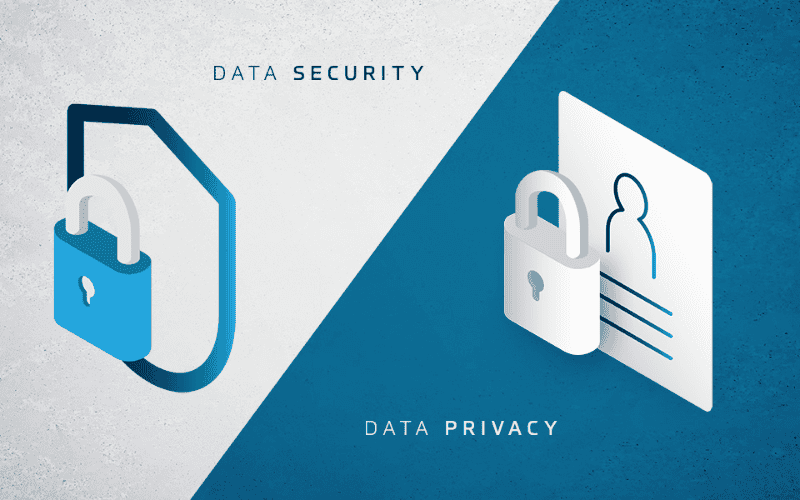
Thus, maintaining Data Privacy và Data Protection is not only a crucial task for organizations but also contributes positively to the safety and stability of the global society. Please follow the website proxyrotating to learn more about data security knowledge.
>> See more:
Data privacy management software
Countries with data privacy laws
